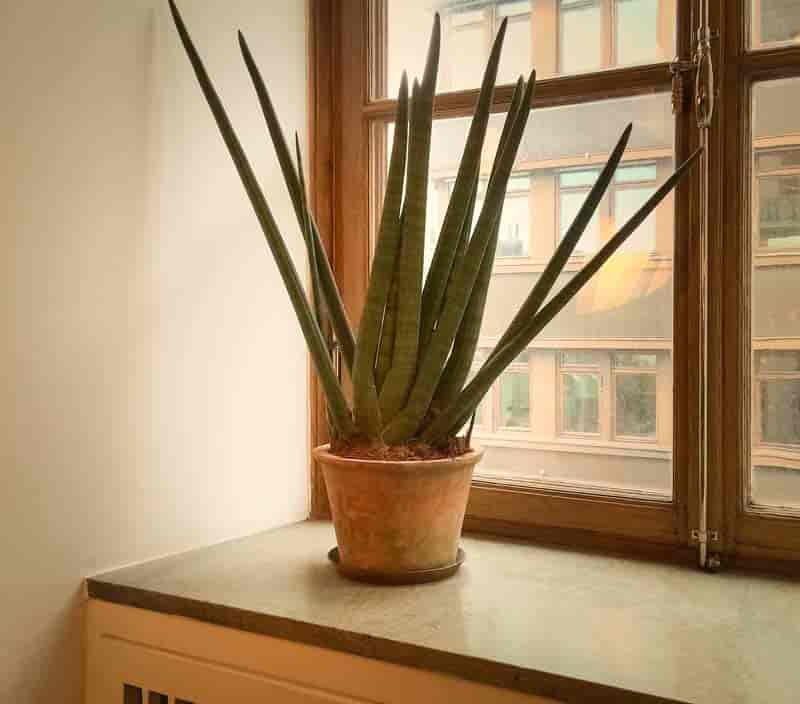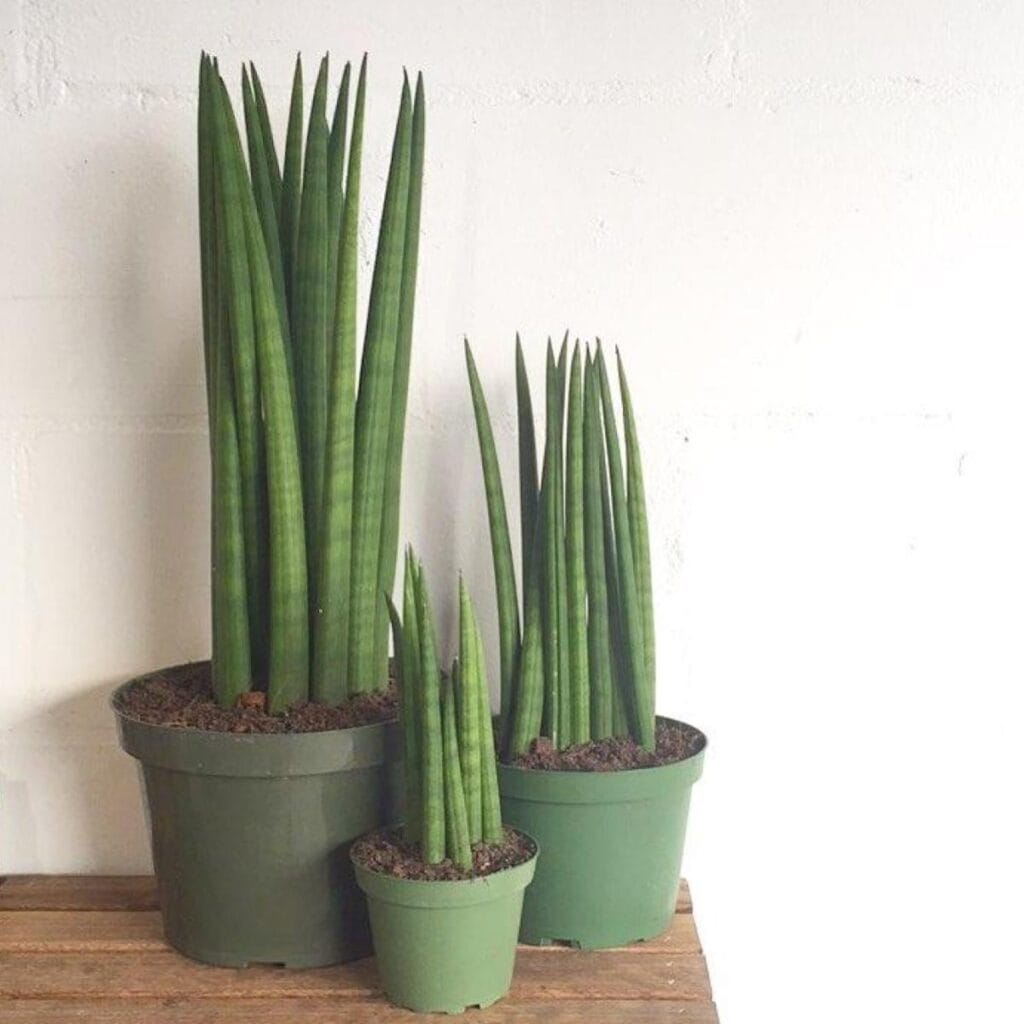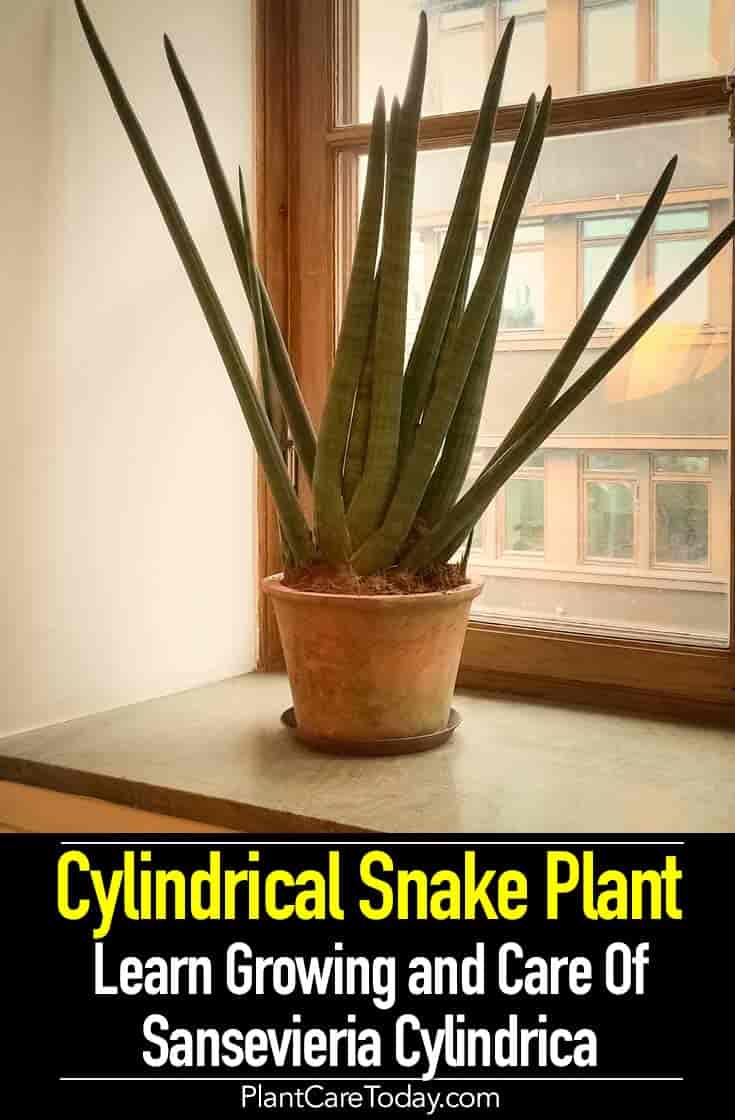Sansevieria Cylindrica (san-se-VEER-ee-uh sil-IN-dree-kuh) is a perennial succulent plant that belongs to the genus Sansevieria part of the Asparagaceae family.

It is native to Angola and commonly referred to as Cylindrical African Spear plant. But other common names as well such as:
- African Spear
- Skyline Spear Sansevieria
- Cylindrical Mother-in-Laws tongue
- Spear orchid
Sansevieria Cylindrica Quick Care Tips
- Botanical Name: Sansevieria Cylindrica
Common Name(s): African Spear, Cylindrical Snake Plant
Synonyms: Sansevieria cylindrica var. patula, Sansevieria cylindrica var. angolensis
Family & Origin: Asparagaceae family, native to Angola
Growability: Easy to grow
Grow Zone: USDA zones 10-11
Size: Grows up to 4′ feet tall and 1′ foot wide
Flowering: Rarely flowers indoors
Light: Thrives in bright, indirect light but can tolerate low light
Humidity: Tolerates low humidity
Temperature: Prefers temperatures between 65-80°F
Soil: Well-draining soil
Water: Allow soil to dry out completely between waterings
Fertilizer: Fertilize once a month during growing season with a balanced fertilizer
Pests & Diseases: Susceptible to spider mites and mealybugs
Propagation: Propagate through division or leaf cuttings
Plant Uses: Air-purifying, decorative plant for indoor spaces
NOTE: The Sansevieria genus has been reclassified as a Dracaena. Cylindrica is now known as Dracaena Angolensis.
Sansevieria Cylindrica Care

Sansevieria cylindrica var. patula ‘Boncel the ‘Starfish Sansevieria‘ is a unique variety of Cylindrica. Mature plants are shorter, more compact with an almost ‘stubby’ appearance.
Very attractive in smaller pots when displayed on a credenza in a complimenting decorative container.
Size and Growth
African spear plants have a slow, upward growth with stiff leaves that can grow to be about 4’ tall with a spread of 1’ foot.
The succulents leaves are circular about 1″ inch (2.5 cm) thick and taper gradually to a point.
Each leaf has several shallow channels running from base of the plant to the tip. The leaves also have crossbands of dark green.
In the right conditions, it can grow a 3’ feet long shoot with 1″ inch flowers.
As the leaves mature and depending on the lighting they arch to form a graceful spray.
Flowering and Fragrance
Sansevieria cylindrica is characterized by a fan-shape that has stiff, dark cylindrical green leaves. Snake plant flower spikes appear on older plants from the leaf base.
These flower spikes grow clusters of green-white blooms that have a tubular shape and can be tinted with some shades of pink.
There is a pleasant fragrance to these flowers and sometimes bear small berries about 0.4” long and orange-red in color.
Light Requirements and Temperature
Sansevieria boncel is very light tolerant. When you grow Sansevieria as an indoor ornamental plant, place it in a spot with filtered bright light.
A north-facing window or sheer-curtained windows are ideal locations for Sansevieria cylindrica.
It will also be able to grow in more low light conditions but the colors will not be as bright, nor will it flower properly.
When growing Mother in Law plants outdoors, it is best placed in a partially shaded, bright light location but will grow in full direct sunlight.
Details On: Light Requirements For Snake Plants
Some shade will ensure that cylindrical leaves grow in a more upright position for a better appearance.
Ideal temperatures for Sansevieria are between 65° to 80° degrees Fahrenheit.
It can handle fluctuations in room temperatures but anything below 50° degrees Fahrenheit might be too much for the plant to handle.
While Sansevieria cylindrica tolerates dry air, too much can be damaging. Take care not to place it too close to protect it from air vents and drafts.
Houseplant Care: Watering and Feeding
- This drought-tolerant plant does not need a lot of water.
- Water thoroughly while Cylindrica is growing and allow the potting mixture to almost dry out before watering again.
- Once a plant becomes established, you can wait even longer before watering.
- Once every other week should be sufficient.
- Be careful to not overwater as it can cause root rot and leaves to turn yellow.
- and getting too much water on the leaves can also cause them to stop growing.
- Similarly, this plant does not need lots of fertilizer.
- A once month application of diluted liquid fertilizer (half strength) is enough during the growing season.
- Plants do not need feeding during the winter months.
- As with all Sansevieria species it is best to under-fertilize your plants.
Soil and Transplanting
Fast and well-draining potting soil is preferred for this plant. Sandy soil or a good cactus soil works best.
Regular potting soils often retain excess water to be effective unless there is some added drainage. Snake plants do not do well in soggy soil.
Transplant only when the snake plants need separating because of overcrowding.
The root systems of plants like Sansevieria trifasciata have been known to break large clay pots.
Generally, plants will not require repotting for several years as the cylindrica Sansevieria does not mind cramped conditions.
Transplanting is done best early on in spring. Always use a pot with drainage holes.
If you are looking for a shorter variety with a similar look check out the Sansevieria Stuckyi snake plant.
How To Propagate The Cylindrical Mother in Laws Tongue
Propagate Sanseveria cylindrica through leaf cuttings, underground rhizomes, or division.
- When using division as a means of propagation, wait until the leaves of the underground rhizomes are at least 6” long.
- Take a sharp knife and remove a cluster basal rosette of leaves from the roots.
- Knock off old soil and plant it directly into your new pot.
- If using single leaf cutting, make sure they are between 3″ – 4″ inches and that they are planted upright to ensure proper growth.
- Plant the African spear by pushing the cuttings into the potting mix and keep them in a bright spot.
- Keep the soil moist and wait for the plant to take root. This could take a while.
Learn More about Sansevieria Propagation

Cylindrical Snake Plant Pests or Diseases
Sansevieria cylindrica is susceptible to vine weevils that eat away at the edges of the leaves.
This can cause the plant a lot of irreversible harm. Get rid of the adult weevil with a neem oil soil drench.
However, if the weevils manage to damage the roots significantly, the plant will probably be beyond saving.
NOTE: I’ve never needed to throw out a Sansevieria because of weevils.
Apart from vine weevils, be careful about overwatering plants so they won’t experience root rot or other fungal infections.
Be careful while handling plant as the tip of the leaves can be very sharp and cut skin if not handled with caution.
An African spear sansevieria plant growing in pots 10″ inches and larger can also become very heavy to move around.
Suggested Uses for Cylindrical Snake Plant
This plant makes for a gorgeous ornamental addition as a potted plant to any house or garden.
The plant is very attractive when used to enhance contemporary designs when displayed on a pedestal.
